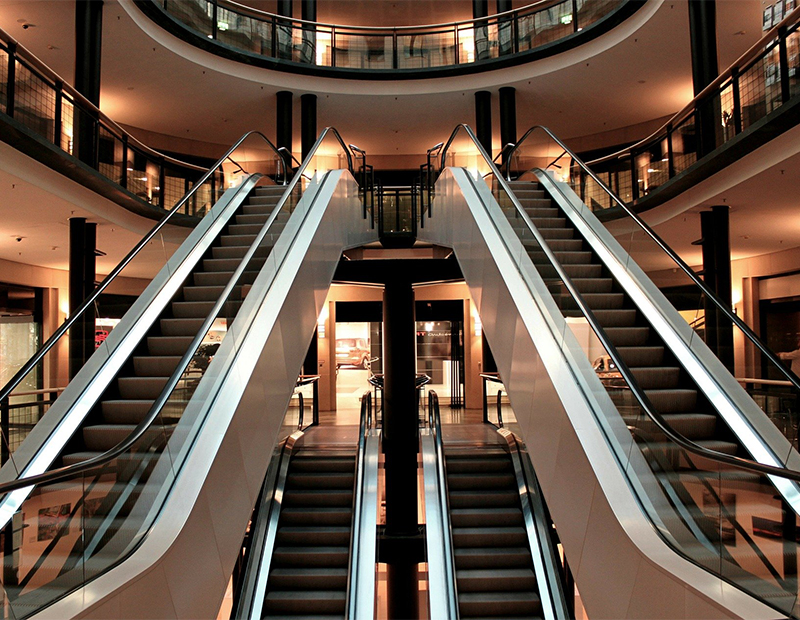Experiential Retail Reigns in 2020
Surprisingly, shopping malls that were thought to be on the road to extinction helped buoy the numbers, according to JLL’s latest report.
The U.S. retail market closed 2019 with strong fundamentals, paving the way for a robust phase in 2020, according to JLL’s new fourth quarter 2019 Retail Outlook report. And shopping malls, thought to be on the road to extinction just a few years ago, helped buoy the numbers. The key to success: Experiential retail.
READ ALSO: Mall Owners Opt for Staggered Openings
The retail market saw a vacancy rate of just 4.6 percent in the fourth quarter of 2019. Putting it all in perspective, the industrial market, currently an investor favorite due to the ever-blossoming e-commerce industry, recorded a vacancy rate of 5.1 percent according to another JLL report. Net absorption in the retail sector skyrocketed 34.5 percent quarter-over-quarter, reaching 10.5 million square feet, with malls leading the way. Mall absorption totaled 1 million square feet in the fourth quarter, as vacated space plummeted 40 percent year-over-year. Regional mall properties surpassed all other property types with 556.9 million square feet of positive net absorption.
“I would not say that 2019 was a turning point for the retail sector, but rather a continuation of trends that we’ve seen for several years now,” James Cook, Americas director of retail research with JLL told Commercial Property Executive. “While some retailers and department stores have been closing, we continue to see expansion from others in the services, value and entertainment sectors.”
A decline in move-outs and a rise in move-ins in the fourth quarter of 2019 bolstered retail property types across the board. Malls saw an influx of apparel and accessories, fitness/wellness and dining tenants. Fitness and health spurred growth at power centers, while salon and fitness tenants bolstered small center demand. Neighborhood centers welcomed education tenants, medical clinics, insurance companies, pet stores and a notable percentage of fitness centers. At community centers, services tenants, grocery stores and medical service providers joined fitness facilities on the tenant roster. Strip centers benefited from such service businesses as insurance companies, salons and medical tenants, as well as small chain restaurants and smaller fitness studios.
“I think that many readers will be surprised to find that service tenants occupy more than half of retail space,” Cook said. Service retailers outpaced product-selling retailers for the first time in the fourth quarter 2019, accounting for 52.6 percent of space. “The popular notion of a shopping center is that it’s a place where you go to get things,” he added. “But today, with so many other ways to purchase commodity goods, shopping centers are now places where you go for services, meals and fun experiences.”
Retail’s golden ticket
Experiential offerings will be the centerpiece of the retail market in 2020, per the JLL report. Commodity sales will continue to move online, as consumers embrace A-commerce, or anywhere commerce, so for the brick-and-mortar set, services and experience will be key. With the growth of Millennial families, kids are prompting an increase in entertainment and experiential stores, including such tenants as Dr. Seuss Experience and Camp. The expansion of experiential retail can also prove a timely endeavor during economic uncertainties. “Any addition to a shopping center that adds an element of affordable fun that can be shared with family or friends will help improve that center’s chances if a recession were to occur,” Cook said.
Experiential will also be front and center at live-work play developments, which continue on the upswing, as landlords respond to consumers’ increasingly loud call for daily destinations near home. Many mall owners, for example, are redeveloping their centers into 24/7 destinations. Outside Boston in Woburn, Mass., Edens is transforming the Woburn Mall from a traditional indoor mall property to the mixed-use Woburn Village, which will feature 350 upscale residences and a vibrant retail mix encompassing food, film and fashion. Centurion American Development Group is pursuing a similar path, with plans to convert Collin Creek Mall in Plano, Texas, to an amenity-rich mixed-use destination. And the face of retail continues to evolve.








You must be logged in to post a comment.